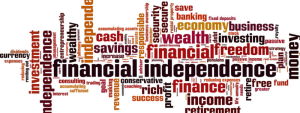Below, you will find our monthly market update and relative information that pertains to the current state of the economy.
Market Update
- All of the market indices except the NASDAQ closed lower than the beginning of the month.
-
- The S&P 500 finished at 5,569.06 pts (-0.76%)
- The DOW finished at 40,669.36 pts (-3.17%)
- The NASDAQ finished at 17,446.34 pts (0.85%)
- The TSX finished at 24,841.68 pts (-0.30%)
-
Canada
Monetary Policy
- On April 16th, The Bank of Canada (“BoC”) decided to maintain the overnight lending rate.
- Currently, the overnight rate is 2.75%, the Bank Rate is at 3.00%, and the deposit rate is at 2.70%.
- The major shift in direction of U.S. trade policy and the unpredictability of tariffs have increased uncertainty, diminished prospects for economic growth, and raised inflation expectations.
- The next interest rate announcement will take place on June 4th, 2025.
Economic Data
- Canada’s inflation rate rose to 2.3% in March, down from 2.6% in the previous month.
- The core inflation rate, which excludes more volatile items (food and fuel), fell to 2.8% (down from 2.9% in January).
- The Canadian economy fell to 0.2% in February, partly offsetting January’s 0.4% increase.
- Despite driving growth in January, goods-producing industries drove the decline in February, as mining, quarrying, and oil and gas extraction and construction contributed the most to the aggregate’s decline.
- Overall, 12 of 20 industrial sectors declined in February.
- Canada’s unemployment rate rose to 6.7% in March, the first increase since November 2024.
U.S.
Monetary Policy
- The Fed announced that there was no change to its federal rate in its May meeting.
- The target range for the federal funds rate is 4.25-4.50%.
- Although swings in net exports have affected the data, recent indicators suggest that economic activity has continued to expand at a solid pace.
- Uncertainty about the economic outlook has increased further. The Committee is attentive to the risks to both sides of its dual mandate and judges that the risks of higher unemployment and higher inflation have risen.
- The next Fed meeting will take place on June 17th-18th.
Economic Data
- The annual inflation rate in the U.S. dropped to 2.4% in March from 2.8% in the previous month.
- The slowdown was driven by a drop in energy prices. Gasoline prices fell sharply, as did the price of fuel oils. However, food inflation picked up in March.
- The U.S. unemployment rate rose to 4.2% in March and maintained the same rate into April.
- This was up from 4.0% in the previous month.
- U.S. GDP declined by 0.3% in the first quarter of 2025, marking the country’s first economic contraction in three years.
- Trade-related uncertainty and weaker cross-border flows impeded business activity and household confidence.
Global
- In February, gross domestic product (“GDP”) in the U.K. expanded by 0.5%. This was the fastest pace of monthly growth since March 2024.
- A rise in manufacturing output drove February’s increase. Services sector activity also improved, helping to lift overall growth.
- On April 17th, the European Central Bank (“ECB”) lowered its policy interest rates by 25 basis points. The main refinancing rate now stands at 2.40%.
- The ECB believes European inflation is on a path back to its 2% target.
- Europe’s annual inflation rate was down to 2.2% in March from 2.3% in February, which was the lowest rate since November 2024.
- The Bank of England (“BoE”) dropped its key interest rate to 4.25% reflecting continued progress in disinflation.
As always if you have any questions, please feel free to reach out to us. Or, if you know someone who would like an opinion on their investments or insurance, please connect us! There is no better compliment than a referral from one of our current clients.
Yours Truly,
The Team, C.R. Smith Financial
Community, Respect, Service & Financial Integrity





